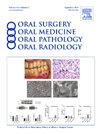Comparison between 2- and 4-plate fixation in Le Fort I osteotomy: a mixed methods systematic review
IF 2
3区 医学
Q2 DENTISTRY, ORAL SURGERY & MEDICINE
Oral Surgery Oral Medicine Oral Pathology Oral Radiology
Pub Date : 2024-09-16
DOI:10.1016/j.oooo.2024.09.002
引用次数: 0
Abstract
Objective
Achieving postsurgical skeletal stability is crucial for successful outcomes and patient satisfaction. Precision maxillofacial surgery, which integrates precision techniques with minimally invasive approaches, is increasingly recognized for its potential to enhance long-term stability and reduce surgical risks and complications. This study aimed to comprehensively evaluate the impact of fixation techniques (2 vs 4 plates) during Le Fort I osteotomy in orthognathic surgery on skeletal stability. The main focus was to compare the stability achieved and potential risks of relapse between these two fixation methods.
Material and Methods
A mixed-methods approach was employed, combining a systematic review, in silico analysis, and in vitro studies. The systematic review adhered to Joanna Briggs Institute methodology and Good Reporting of A Mixed Methods Study guidelines, focusing on comparative studies that evaluated skeletal stability as the primary outcome measure. In silico and in vitro analyses were conducted to assess the biomechanical principles and relapse risks associated with maxillary advancement using different fixation techniques.
Results
The systematic review included three clinical trials, four finite element analysis studies, and two in vitro analyses. The meta-analysis revealed no significant difference in skeletal stability between the 2- and 4-plate fixation methods. However, biomechanical analysis showed an atypical increase in relapse risk with 2-plate fixation at 3 mm maxillary advancement, compared to a 10 mm advancement for 4-plate fixation.
Conclusions
While both 2- and 4-plate fixation methods are viable, the findings suggest that 4-plate fixation offers superior stability, particularly in cases of significant maxillary advancement, where 2-plate fixation showed an increased risk of relapse. Future research with larger sample sizes and addressing the biases identified in this study is needed to validate these findings and effectively guide clinical practice.
Le Fort I型截骨术中2钢板与4钢板固定的比较:一种混合方法的系统评价。
目的:术后骨骼稳定是手术成功和患者满意度的关键。精密颌面外科将精密技术与微创方法相结合,因其提高长期稳定性、降低手术风险和并发症的潜力而日益受到人们的认可。本研究旨在全面评估Le Fort I型正颌手术中固定技术(2 vs 4钢板)对骨骼稳定性的影响。主要的焦点是比较这两种固定方法的稳定性和复发的潜在风险。材料和方法:采用混合方法,结合系统综述、计算机分析和体外研究。系统评价遵循乔安娜布里格斯研究所的方法和混合方法研究指南的良好报告,重点是将评估骨骼稳定性作为主要结果衡量指标的比较研究。我们进行了计算机和体外分析,以评估使用不同固定技术的上颌前移的生物力学原理和复发风险。结果:系统评价包括3项临床试验、4项有限元分析研究和2项体外分析。meta分析显示,2板和4板固定方法在骨骼稳定性方面无显著差异。然而,生物力学分析显示,与上颌前移10mm钢板固定相比,上颌前移3mm钢板固定复发风险不典型增加。结论:虽然2板和4板固定方法都是可行的,但研究结果表明,4板固定提供了更好的稳定性,特别是在上颌明显前移的情况下,2板固定增加了复发的风险。未来的研究需要更大的样本量,并解决本研究中发现的偏差,以验证这些发现并有效地指导临床实践。
本文章由计算机程序翻译,如有差异,请以英文原文为准。
求助全文
约1分钟内获得全文
求助全文
来源期刊

Oral Surgery Oral Medicine Oral Pathology Oral Radiology
DENTISTRY, ORAL SURGERY & MEDICINE-
CiteScore
3.80
自引率
6.90%
发文量
1217
审稿时长
2-4 weeks
期刊介绍:
Oral Surgery, Oral Medicine, Oral Pathology and Oral Radiology is required reading for anyone in the fields of oral surgery, oral medicine, oral pathology, oral radiology or advanced general practice dentistry. It is the only major dental journal that provides a practical and complete overview of the medical and surgical techniques of dental practice in four areas. Topics covered include such current issues as dental implants, treatment of HIV-infected patients, and evaluation and treatment of TMJ disorders. The official publication for nine societies, the Journal is recommended for initial purchase in the Brandon Hill study, Selected List of Books and Journals for the Small Medical Library.
 求助内容:
求助内容: 应助结果提醒方式:
应助结果提醒方式:


